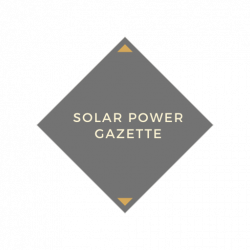SunDrive receives ARENA funding for Australian solar cell technology
Australian solar cell innovator SunDrive has received another helping hand from the Australian Renewable Energy Agency (ARENA) to help the company bring its homegrown technology to market.
How much funding did SunDrive receive and what is it used for?
As part of ARENA’s Advancing Renewables program, SunDrive received a $25.3 million grant to scale and commercialize its copper metallization solar cell technology to bring its South Sydney research and development facility to a commercial production capacity of 300 MW.
The funding will support local development, deployment and refinement of production tools, as well as cost modeling to support commercialization. The modules will be manufactured at SunDrive’s Kurnell facility for field testing and early market acceptance.
The company called it a major milestone for SunDrive and Australian solar innovation, saying:
“The first commercial demonstration tool has been built and customer demonstrations are currently underway to show how Australian research can be translated into real-world manufacturing capabilities.”
This latest grant complements ARENA’s previous $14 million in funding to demonstrate SunDrive’s copper metallization technology.
What is special about SunDrive solar cells?
SunDrive uses a copper-based process to replace the silver used in solar cells. The goal is to reduce costs, improve efficiency while supporting ARENA’s ultra-low-cost solar goal.
“Not only is copper more abundant and cheaper than silver, but SunDrive’s unique manufacturing process also results in higher cell and module efficiencies, which could have huge benefits for global decarbonization efforts,” said Darren Miller, CEO of ARENA.
A 2023 University of New South Wales (UNSW) study found that silver will consume up to 98% of the world’s current silver reserves by 2050 if it continues to play such an important role in solar production. Especially given the advent of “passivated contact” solar technology, which requires two to three times more silver, SunDrive says.
According to ARENA, the solar industry currently consumes a third of the world’s industrial silver.
In April 2021, SunDrive achieved a cell efficiency of 24.48% with its copper technology, making it the most efficient commercial-sized solar cell ever manufactured. By September 2022, the cell efficiency had been increased to 26.41%. I haven’t been able to determine if there have been any efficiency improvements since then.
Cooperation partner
The ARENA-funded project is being carried out in collaboration with Chinese companies Suzhou Maxwell Technologies Co Ltd and Jiangsu Vistar Equipment Technology Co Ltd, two long-established solar cell manufacturers. In May this year, SunDrive signed a Joint Development Agreement (JDA) with the pair to jointly develop and distribute commercial-scale direct copper plating tools to advance the development and production of high-efficiency heterojunction solar cells (HJT).
“By partnering with the world’s leading solar cell equipment manufacturers, Maxwell and Vistar, we are now demonstrating how our record-breaking technology, combined with SunDrive’s engineering innovation, can be scaled up to industrial production, making solar energy more efficient with a more abundant and affordable material by replacing silver with copper,” SunDrive said.
It’s not the first time the company has worked with Chinese solar heavyweights. In October last year, SunDrive announced that it was leading an application for funding under the Albanian government’s Solar Sunshot program in a joint venture with Trina Solar. According to SunDrive, the planned Sydney facility will create more than 300 skilled jobs and have an annual production capacity of 1.2 gigawatts.
As far as I know, there is no further news on this, but ARENA has yet to provide all of the funding from this round.
When can you buy SunDrive panels?
It is still unclear when the SunDrive solar modules will finally be available here in Australia.
If you’re looking for Australian-made solar panels for your home’s roof, Tindo Solar is the only show in town – and Tindo makes good panels. The company manufactures its modules in Adelaide from local and imported components – imported elements also include solar cells. However, expect to pay a premium well above the prices of high-quality Chinese budget brands like Trina.
If country of manufacture isn’t a big factor in your purchasing decision, here’s what you need to know to choose a good solar panel brand.



Comments are closed.